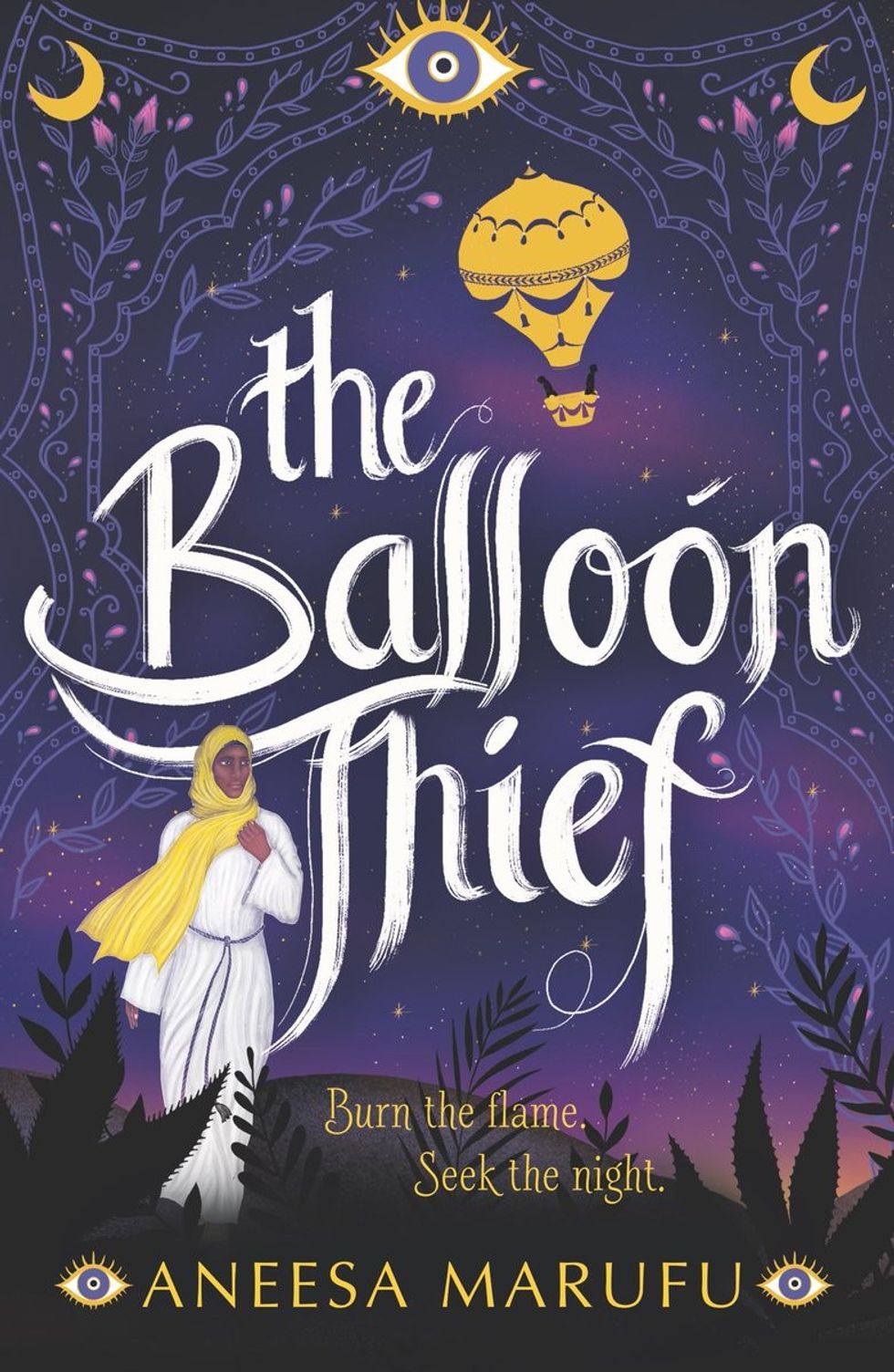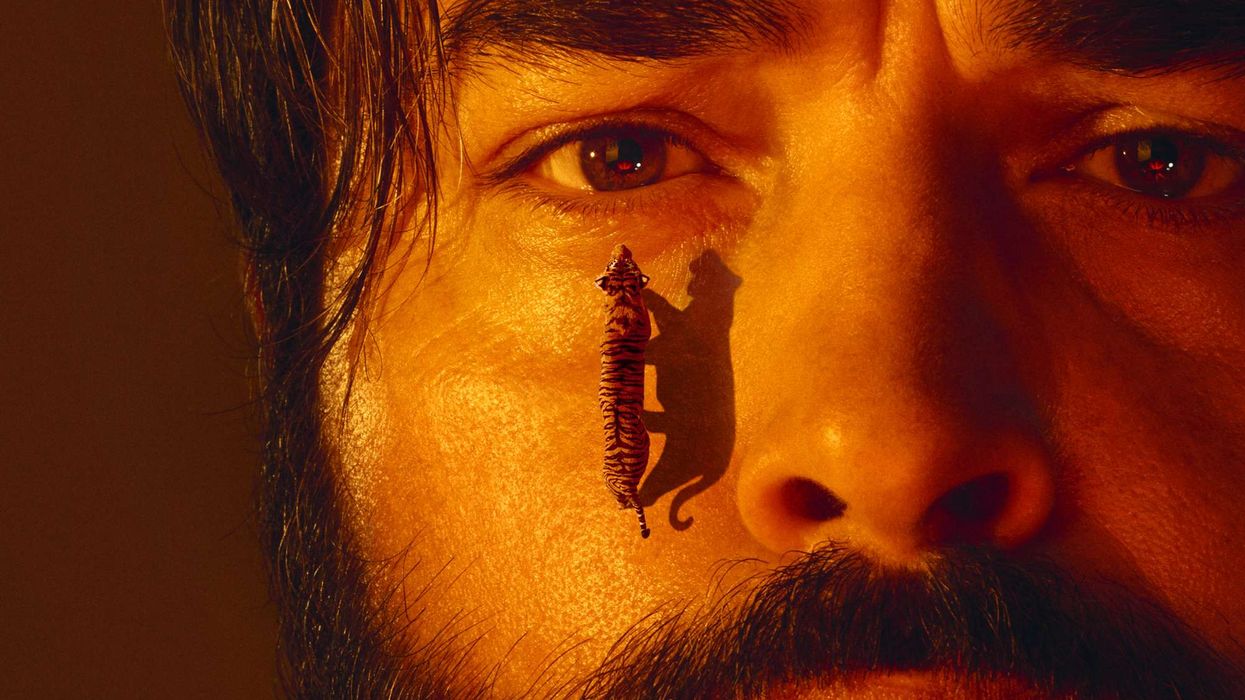NEWLY RELEASED novel The Balloon Thief cleverly combines a fantasy world and real life to tell an intriguing story of a girl’s literal and metaphorical journey towards friendship, freedom and finding a safe place in the world.
The dynamic debut book from Aneesa Marufu also tackles important themes that include terrorism, extremism and racism in a unique way, with writing that draws inspiration from her heritage and contemporary literature. The young adult (YA) adventure story of a girl finding escape in a hot-air balloon is the beginning of a literary journey for the prize-winning young author from Manchester.
Eastern Eye caught up with her to discuss her book, the key message she wants to convey, writing and inspirations.
What would you say first connected you to creative writing?
Definitely the escapism. Creative writing gives you an ability to construct a whole new world with just a pen and paper, and the power of your mind. There really are no rules or limits to what you can create, and that’s why it’s so much fun.
What inspired the story of your book?
My own experiences with racism and Islamophobic bullying as a teenager are what inspired the themes of racism, extremism and terrorism in the book. Growing up as a British Pakistani and a Muslim, I often felt like I never quite fitted in. I didn’t know where I belonged and didn’t feel wholly accepted by society. I wanted to write a book that tackled these issues in a fantasy world, where I would be free to explore these themes without the constraints of the real world.

Tell us about the book?
The Balloon Thief is a south Asian-inspired YA fantasy that focuses on main characters – Khadija and Jacob – from two opposing races and their battle for friendship in a racially segregated society. The book would be suited to fans of Noughts and Crosses, The City of Brass and We Hunt the Flame.
Are any elements or emotions in it based on real life?
Two key elements in the book are identity and loneliness. The Balloon Thief is about finding one’s place in the world and discovering the power of an individual to spark change. It is also about finding acceptance and companionship. Feeling like you belong within your environment and among your peers is very important.
What is your favourite part of the book?
It would have to be the point where both characters realise they are more than just what society expects of them. They claim their own power and take charge of their own destinies, and in doing so, discover more about themselves.
Who are you hoping will connect with this book?
I imagine it will connect with readers who may feel a bit lost. They may feel like they don’t know where they belong or what their purpose is in the world. They might feel they are too small and insignificant to make a difference, and I hope The Balloon Thief can be the inspiration that proves this is not the case.
Is there a key message you want to convey with this story?
As the story unfolds, the characters learn to put their differences aside to tackle a greater threat, and in doing so learn the power of friendship and forgiveness. That really is the key message. I wanted to show that the world is not so black and white, that people are often the product of their environment and life experiences. However, I wanted to show with this story that love and friendship can, and do, prevail.
Did you learn anything new while writing it?
Writing a book is a lot like constructing a building. There is no point feeling upset that the scaffolding looks ugly (and I have produced some ugly first drafts). Editing is where the polishing and refining takes place, and that is what produces the final result.
Have you flown in a hot-air balloon yet?
No, I haven’t, but it is definitely a bucket list dream of mine.
What do you enjoy reading and do you have a favourite book?
I don’t think I can commit to just one favorite book. There are so many that hold a special place in my heart, whether they have made me laugh, cry or both. Books that have stayed with me are The Kite Runner, Eragon and The Inkheart series. I read very widely across fiction and non-fiction, adult, and YA, though fantasy will always be my favourite genre to read.
What can we expect next from you?
There may or may not be a sequel to The Balloon Thief in the works. I am working on another fantasy standalone, which I can’t say too much about. The only thing to expect is that similar to The Balloon Thief, it’s another YA fantasy drawing from the myths and magic of another culture.
What inspires you?
So many things – books, movies, dreams, people I see in the street, the weather, a smell, a colour. It can be literally anything that can cause inspiration to strike. That’s why I’m always pulling up my notes app on my phone and jotting down random ideas as they come to my mind. You never know what might spark the idea of a whole new world.
What were you feeling before the publication of the book?
Equal parts excited and nervous. It is a lot like the feeling of riding a rollercoaster. For me, the build-up to publication seems to have been going on for years, from when I signed with my agent to learning that my book was going to be published. It has been a long journey, and all those years of hard work is what will make seeing the book finally published and out on the shelves that much more rewarding.
Why should we pick up the book?
If you like reading fantasy and you want to be transported to a new world of jinn, magic and hot-air balloons, with characters that you can’t help rooting for, even the bad ones and ones who have been led astray, then I would definitely give The Balloon Thief a try.
Twitter: @aneesamarufu and Instagram: @aneesa.marufu






 Ammar says the play’s script itself served as a compass in navigating Musa’s divided psycheIsha Shah
Ammar says the play’s script itself served as a compass in navigating Musa’s divided psycheIsha Shah Bengal Tiger at the Baghdad Zoo runs at the Young Vic Theatre in London from December 2 – 31 January 31 2026Isha Shah
Bengal Tiger at the Baghdad Zoo runs at the Young Vic Theatre in London from December 2 – 31 January 31 2026Isha Shah






